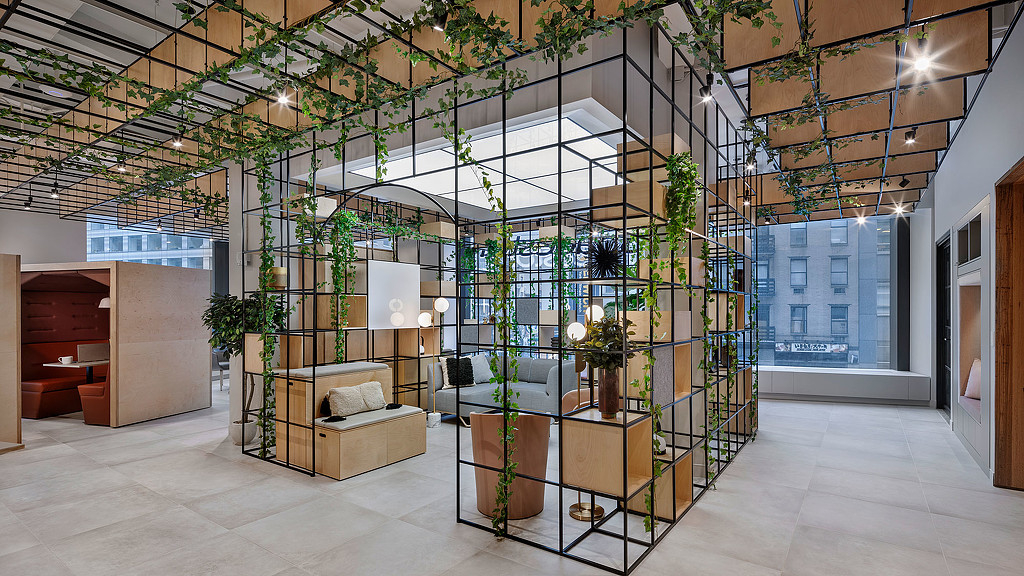4 Considerations for the New Retail Environment
June 22, 2020 | By Michael Gatti
Editor’s Note: This post is part of our ongoing exploration of how design is responding to the COVID-19 pandemic.
Before the COVID-19 pandemic hit, the retail industry was already facing unprecedented volatility and uncertainty. Then, in just a matter of weeks, the global health crisis upended supply chains and forced stores to shutter. While the landscape continues to evolve, it’s clear that the path to whatever the new ‘normal’ will look like post-pandemic will require a combination of new hygienic protocols and an evolution of the retail experience.
Retailers have begun to institute short-term measures for phased reopening to ensure the safety and comfort of their customers, but what can brands do to get people interested in shopping again? How can retailers make customers feel engaged and at ease as we emerge from these challenging times?
The key is to not solely focus on the physical, online, or virtual experience. Instead, we must focus on innovating and combining all three — and in that way, retailers can meet new customer expectations.
With that context, here are four considerations for retailers to rethink the new retail environment:
1. Provide avenues for escapism and allow consumers to reinvent themselves.As we wait for our previous way of life to return, brands will need to solve consumers’ heightened needs for escapism. As consumers who have been confined to their homes crave social activities like dining in a bustling restaurant or casually shopping with friends, retailers that offer them the ability to escape will come out on top. With most purchases currently being made for practical reasons, retailers that offer aspirational storytelling and creative inspiration both now, and post-pandemic, will rebound. Brands will also need to prepare for consumers looking to reinvent their post-pandemic selves.
As consumers strive to constantly evolve themselves, dopamine fueled self-reward motivates people to buy. Linda Price, a marketing professor at the University of Oregon, has studied this need for self-evolution through what she calls the fresh start mindset, which predicts consumers’ efforts and choices directed at self-transformation. Nike recently tapped into both the need for escapism and reinvention when they connected Chinese customers to their Training Club app, which led to a spike in their e-commerce app and converted to online sales.
2. Provide engaging and creative in-store experiences.Retailers tapping into this current need for escapism through online channels need to also be planning to provide engaging and creative in-store experiences. By using social media to create a buzz online, brands can drive more consumers to their physical stores. Programming spaces to be flexible and accommodate one-of-a-kind in-store events, such as a performance or limited-edition product launch, can help move the needle. Additionally, as we anticipate longer dwell time as people queue up to enter stores, this is an opportunity to rethink the visual merchandising experience, starting from the exterior window display to the customer's journey as they explore different floors.
3. Tap into increased digital consumption.With nearly a third of the world under a form of a COVID-19 lockdown, this shift has inevitably increased digital consumer behavior. Not only are consumers open to trying new ways of making purchases for essential items, they’re also taking advantage of new ways of learning, socializing, and discovering online. Just as consumers are flocking to online art galleries and language learning apps, we are also seeing this digital acceleration in the fashion world, where social media users are discovering and connecting with new brands through mobile apps such as YouTube and Instagram. Direct-to-consumer sales through social media is a key way brands can tap into this surge of digital consumption.
4. Test and learn to see what works.Consumer expectations have been suddenly reset, creating an opportunity to experiment and initiate change. Saks Fifth Avenue has pressed to change the delivery schedule of seasonal products to realign them with consumer demand. Nordstrom had already launched Nordstrom Local, a retail space with no inventory that offers services like on-premise alterations and styling. This model could be a more successful formula moving forward as it has seen higher spending and quicker returns.
In March, more than 2.5 million viewers tuned in to Shanghai Fashion Week — the first purely digital fashion week. More than 150 brands showcased their new collections via livestream, and some reached conversion rates over 15%. Similarly, brands such as Drest and Carlings are experimenting successfully with digital fashion, as they dive into digital styling and digital clothing collections respectively.
We are even seeing experimentation on the business side, which will also evolve in response to the financial and supply chain stress. Retailers such as Nike and Adidas are quickly evolving to sell more products directly to consumers through their own retail stores. Even department stores may be moving away from a wholesale model and towards a leased shop-in-shop model, where brands control their own inventory and sales.
Brands that succeed will likely redefine the purpose of their retail stores with a clear and distinct point of view. Brands can experiment with store formats with the help of spatial data. Connecting data to physical space provides greater insights into facilitating better retail experiences. By integrating sensors and IoT technology into the store, the insights gathered from these tools can help brands understand in-store movement such as flows and pinch points, behaviors such as when products or surfaces have been touched but not cleaned, and how to align staffing plans with a layout. We can anticipate some of these technologies will become more mainstream in the retail environment.
The steps that retailers take right now will determine the long-term fate of many brands as they formulate their response to both financially sustain and evolve into their post-pandemic identity. As people embrace digital technology through e-commerce apps, social media purchasing, and even gaming, brands will need to carefully create a complex omnichannel strategy to reach their target consumers. By using these emerging channels creatively, brands can deliver exciting and experimental experiences and offer the much-desired escapism the world needs.
For media inquiries, email .

